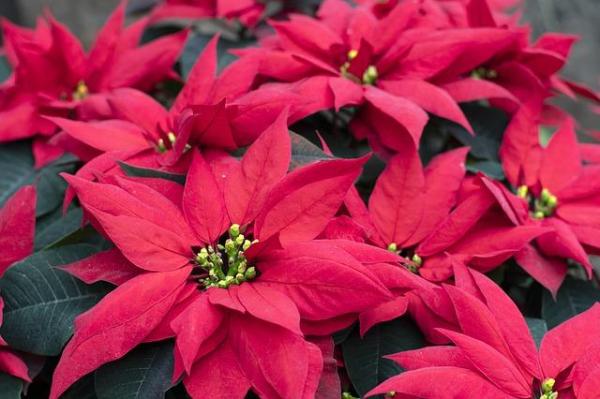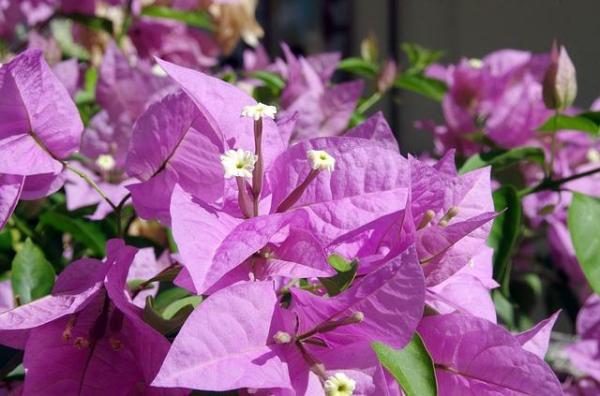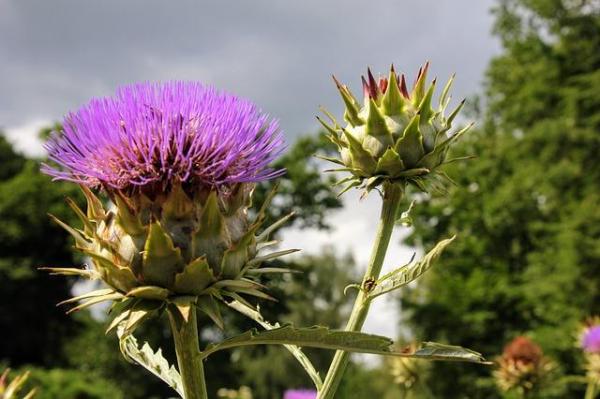What Is a Bract in a Flower?


Bracts are a part of a plant which can be quite confusing, especially in certain plant species. Often they can look like a leaf, but sometimes they look like the petals of a flower. This is because they can be of various colors, textures, shapes and sizes. While some may look like petals, they are not. They are modified leaves, so they are different from the normal leaves on a plant. While they may not be as well known as these other parts of a flowering plant's anatomy, they are very important and carry out several vital functions. This is why thedailyECO asks what is a bract in a flower?
In addition to explaining the anatomy and function of plant bracts, we also provide photos so you can see them for yourself. Doing so will help you to see why many people confuse bracts with both leaves and petals.
What are bracts in plants?
Archaically known as hypsophylls, bracts in botany are modified leaves which are located near compound flowers in flowering plants. While they are typical of angiosperms, they can also be found in gymnosperms. Their function is similar in non-flowering plants, but they are often not as obvious.
Bracts are modified leaf organs that are differentiated from normal leaves by their size and color, depending on the species. There are cases where this line of visual differentiation between leaves, bracts and flowers can be quite fine, as is the case with floral bracts which can be even more striking than the flowers themselves. There are also bracteoles which arise from the floral pedicel and are located right on the lateral axis of the flower.
Bracts are also often confused with sepals of a plant, another modified leaf which protects the young buds before blooming and helps support after they do so. The best way to differentiate bracts from the leaves, sepals or petals of a plant is by their function. Bracts act as a protective shield for flowers. In fact, they also carry out photosynthesis, although their contribution is less than that of the other parts of the plant's anatomy.
Bracts are commonly known as false flowers. Especially in the case of floral bracts, they are much more striking and showy, so it's normal for them to be confused with flower petals. The best example is the poinsettia. In this case, the bracts take on their characteristic intense red color due to the drop in temperature. They are often confused with the petals of the small flowers inside, making it appear that the flower is entirely red. In reality these are modified leaves and the flowers are the small white inflorescences in the center.
To learn more about how a plant feeds itself, take a look at our article asking how does photosynthesis work?

Characteristics and functions of bracts
Next, we will list the main characteristics and functions of bracts in order to differentiate them from other organs in flowering and non-flowering plants:
- The bracts are generally smaller than the leaves of the plant, although there are exceptional cases where this happens the other way around.
- The bracts are usually bright and striking in color, ranging from from the deepest green to the brightest reds. They can be pink, yellow, violet or even white, among other colors.
- Although they also carry out photosynthesis, their energy input is much lower than that of the rest of the parts of the plant that actively carry it out, such as the stem or leaves.
- The main function of bracts is to protect the flowers and ensure their reproduction. They primarily protect them from insects or climatic influences, such as strong winds or heavy rains.
- The bracts are born just at the base of the flowers and reach their maximum development before the flowers are fully developed.
- The bracts can form from one to several overlapping levels around the flower.
The purpose of bracts in non-flowering plants is a little different, but functionally the same. Instead of supporting and protecting flowers, the bracts in gymnosperms can protect spores or cone scales, depending on the plant.
Discover more about flowering and non-flowering plants with our comparison of the differences between gymnosperms and angiosperms.

Examples of plants with floral bracts
These are some examples of plants with floral bracts :
- Red ginger (Alpinia purpurata)
- Linden (Tilia sp.)
- Dandelion (Taraxacum officinale)
- Poinsettia (Euphorbia pulcherrima)
- Artichoke (Cynara scolymus)
- Anthurium (Anthurium sp.)
- Bougainvillea (Bougainvillea sp.)
- Calla lily (Zantedeschia aethiopica)
- Guzmania (Guzmania sp.)
- Heliconia (Heliconia sp.)
- Buddha lamp (Mussaenda sp.)
- Indian feather (Vriesea sp.)

Difference between bracts and sepals
We have already explained that bracts and sepals in flowering plants are often confused with each other. This isn't helped by the fact they both provide supportive and protective functions. This is also due to their very similar morphology and even coloration in some cases. For example, both sepals and bracts can be green due to the presence of chlorophyll.
At first glance, they are only distinguishable by their size and position at first glance. Remember that bracts are modified leaves that are found very close the flower or inflorescence in most cases. Conversely, sepals form during the plant's growth cycles, both during the first and second protective cycles. These are also arranged around the flower's calyx, but they are not attached to it.
Furthermore, the sepals are completely independent organs. This is in contract to the bracts which form a single group that protects the flower. This group is called the involucre and can be found at the base of the flower, in the capitulum or in the umbel of the plant, depending on the species.
You can learn more about what are the sepals in a flower with our related guide.
If you want to read similar articles to What Is a Bract in a Flower?, we recommend you visit our Biology category.








